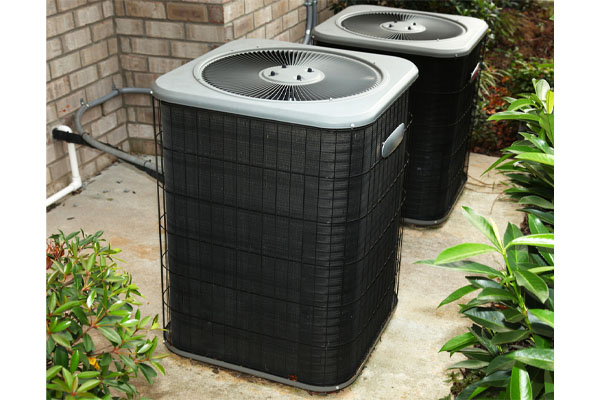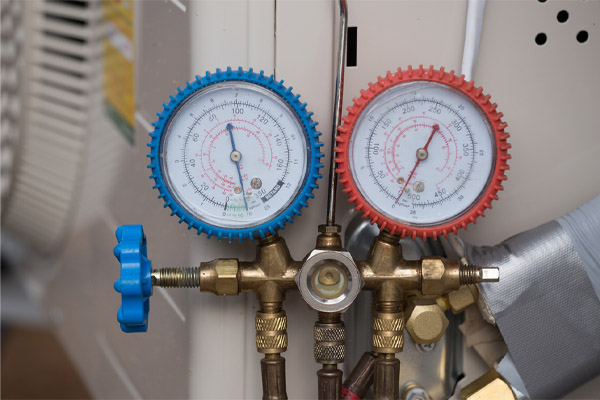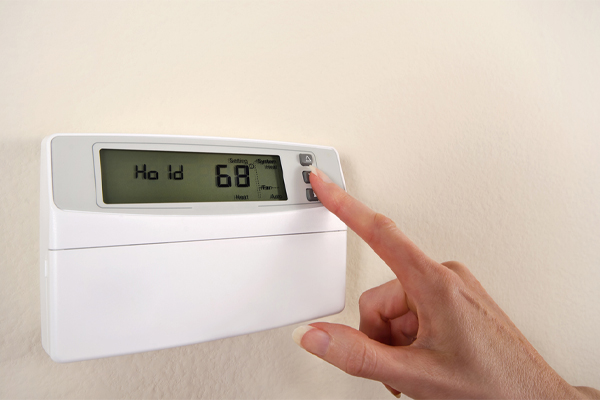How Does An Air Conditioner Work?

Whenever it feels hot inside the house, we often turn to the air conditioner for comfort. We can push a few buttons, wait for a while, and enjoy a cooler home. It’s a great piece of technology that makes the worst summer days bearable. It protects us from potentially dangerous heat stroke and allows us to sleep well at night. Earlier civilizations might consider it magical how we could now control our environment. In reality, it’s all about the intelligent application of scientific concepts. If you have ever wondered “How does an air conditioner work?”, then this article is for you.
How Does My Air Conditioner Cool My Home?
Contents
- 1 How Does My Air Conditioner Cool My Home?
- 2 Parts Of An Air Conditioner
- 3 The Standard Cooling Process Of An Air Conditioner
- 3.1 Step 1: The Thermostat Signals The Need For Cooling
- 3.2 Step 2: The Refrigerant Absorbs Heat From Indoor Air
- 3.3 Step 3: Fans Blow Back Cooler Air To The House
- 3.4 Step 4: Heat Within The Refrigerant Is Released Outdoors
- 3.5 Step 5: Fans Blow The Hot Air To The Surroundings
- 3.6 Step 5: The Cold Refrigerant Goes Back To The Indoor Unit
- 3.7 Conclusion
- 4 Call McAllister Energy For Superior Heating & Cooling Solutions
In this article, we discuss how an air conditioner manages to keep your home nice and cool in the summer.
Parts Of An Air Conditioner
Before we discuss the process, we need to get familiar with the different parts of an air conditioner. Here we will keep it simple by concentrating on the four main components and their roles in the cooling cycle:
1. Refrigerant

The air conditioner’s refrigerant is the lifeblood of the system. It is a chemical that is responsible for carrying heat away from the house and out to the surroundings. The cooling cycle is a description of the refrigerant’s journey across different components and how it changes along the way.
2. Evaporator Coils
This is the main component of the indoor unit that interacts with the household environment, absorbing heat. The coils need to be kept clean to optimize their performance. Air filters must be replaced periodically.
3. Condenser Coils
This is the main component of the outdoor unit that interacts with the outside environment, releasing heat. These coils are also vulnerable to dirt and debris so periodic cleaning is a must. Be sure to schedule an air conditioner tune-up before summer.
4. Compressor
This is a pump that is responsible for keeping the refrigerant moving from the evaporator coils to the condenser coils. You can think of this as the heart of the system.
The Standard Cooling Process Of An Air Conditioner
Step 1: The Thermostat Signals The Need For Cooling

Let’s start from the beginning. You have just gotten back to your home after a long day at work. The air conditioner was turned off the whole time while you were away to save on energy. It’s a bit hot inside so you turn the cooling system on and set your desired temperature with the thermostat. Sensors will check the current ambient temperature. If it is higher than the desired temperature, then the thermostat will send a signal to start the cooling cycle. The compressor will come to life and make the refrigerant flow across the system. The fans will turn on as well.
Step 2: The Refrigerant Absorbs Heat From Indoor Air
The first stop of the refrigerant is the evaporator coils of the indoor unit. At this point, the chemical will be quite cold. When it gets into contact with hot indoor air, it will absorb the heat like a sponge. The air will grow colder while the refrigerant gets warmer. If the indoor air is humid, then the vapor might even turn into water because of the lower temperature. Thus, the AC also serves to lower indoor humidity. A tray is on standby to collect this moisture and divert it outside so that it doesn’t leak into the house and damage the floor.
Step 3: Fans Blow Back Cooler Air To The House
A fan will blow the cold air around the evaporator coils back into the house. In a central air conditioning system, the cold air will travel through the ducts to reach every room for uniform cooling. In a window unit or a split system, the fans will blow the cold air to the specific room where they are installed. The latter provide each occupant with the ability to control the temperature within their own zones to satisfy different needs. They can also turn off the indoor unit in their room if they are going out to reduce energy consumption.
Step 4: Heat Within The Refrigerant Is Released Outdoors
The refrigerant cannot keep absorbing heat forever since it has its limits. The hot refrigerant now needs to travel to the outdoor unit where it can release the heat it has gathered through the condenser coils. As long as the chemical is hotter than the outdoor environment, it should be able to dump the heat until it reaches equilibrium.
Step 5: Fans Blow The Hot Air To The Surroundings
To help the refrigerant cool down, powerful fans blow air across the condenser coils. This part of the system enables heat to move outside at a faster rate. The surroundings will get hotter which you can confirm by putting your hand near the top of the outdoor unit. Since it is installed in an open area, the wind will simply blow the hot air away. It is possible for the house to keep releasing indoor heat to the surroundings through the air conditioner.
Step 5: The Cold Refrigerant Goes Back To The Indoor Unit
Once the refrigerant has gotten colder, the compressor will pump it back to the indoor unit in order to repeat the cycle. This process will continue until the thermostat detects that the current indoor temperature is equal to the desired temperature in the settings. Then it will stop and rest for a bit. If the indoor temperature rises again, then it will automatically restart the cooling process.
Conclusion
As you can see, an air conditioner does not actually produce cold air from scratch. It simply removes heat from the house bit by bit until it gets cold enough to satisfy the occupants. It’s a clever design that has proven to be effective for decades. Newer models continue to push the boundaries of energy efficiency leading to lower consumption and greater comfort.
Call McAllister Energy For Superior Heating & Cooling Solutions

McAllister Energy offers high-quality HVAC services in Camden County, New Jersey. We hire only the best professionally certified technicians who conduct superior heating and cooling services. Some of our HVAC services include indoor air quality solutions, HVAC maintenance, heating and cooling installations, repairs, ductless systems, and much more. All our techs provide accurate HVAC services on time, every time.
Our company guarantees affordable heating and cooling service rates. Our maintenance services can increase your home’s comfort, energy efficiency, and cost-effectiveness. We can also provide you with a highly energy-efficient HVAC replacement system that fits your budget. Your satisfaction is important to us, so all our work comes with a guarantee. Book a service appointment with McAllister Energy today. We provide free, in-home estimates.
You can click here to contact us now or call us at (856) 665-4545 to find out more!